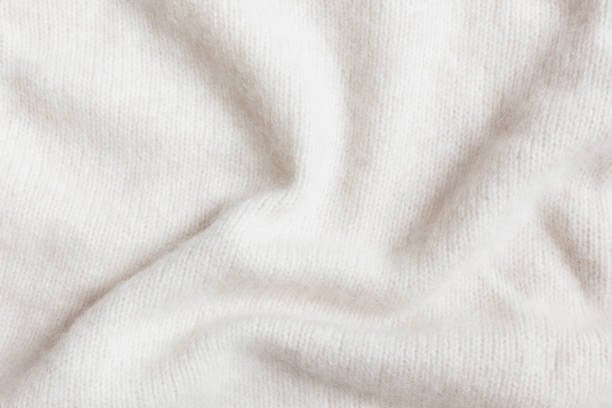Table of Contents

The Versatility and Comfort of Knitted Fabrics
Knitted fabrics have been a staple in the textile industry for centuries, renowned for their versatility, comfort, and unique texture. Whether you're a fashion enthusiast or simply curious about fabrics, understanding What kind of fabric is knit? is essential. In this article, we will explore the different aspects of knitted fabrics, including their construction, types, characteristics, and uses. So, let's unravel the mystery of knitted fabrics and dive into the world of knitting!
1. The Intricate Art of Knitting
Knitting is a method of creating fabric by interlocking loops of yarn or thread using knitting needles or a knitting machine. This process allows for the creation of a flexible and stretchy textile, making knitted fabrics highly desirable for various applications. The intricate art of knitting involves two basic stitches: knit and purl. The combination and arrangement of these stitches create an endless array of patterns and textures.
2. Understanding the Structure of Knitted Fabrics
Unlike woven fabrics, which are made by interlacing two sets of yarns perpendicular to each other, knitted fabrics are constructed by looping yarns together in a series of interconnected rows. This looped structure gives knitted fabrics their unique stretch and flexibility. The loops, known as stitches, can be manipulated to create different fabric densities, textures, and patterns.
3. Types of Knitted Fabrics
There are several types of knitted fabrics, each with its own distinct characteristics and uses:
Jersey Knit:
Jersey knit is perhaps the most common and widely recognized type of knitted fabric. It is lightweight, soft, and stretchy, making it ideal for T-shirts, dresses, and activewear. Jersey knit fabrics have a smooth, flat surface and a single-knit construction.
Rib Knit:
Rib knit fabrics have raised vertical lines, or ribs, on both sides of the fabric. This type of knit is often used for cuffs, collars, and hemming due to its excellent elasticity and ability to retain shape. Rib knit fabrics can range from fine ribs to chunkier textures.
Interlock Knit:
Interlock knit is a double-knit fabric that is thicker and more stable than jersey knit. It has a smooth and uniform surface on both sides, making it an excellent choice for garments that require opacity. Interlock knit fabrics are commonly used for dresses, skirts, and baby clothes.
French Terry:
French Terry is a knit fabric with looped piles on one side and a flat surface on the other. It is known for its moisture-wicking properties and is often used in activewear, loungewear, and sweatshirts. French Terry fabric provides both comfort and breathability.
Double Knit:
Double knit fabrics are created using two sets of yarns and are typically thicker and more stable than single-knit fabrics. They have excellent drape and shape retention, making them suitable for structured garments such as jackets, skirts, and pants.
4. Characteristics of Knitted Fabrics
Knitted fabrics possess several unique characteristics that set them apart from other types of textiles:
Stretch and Flexibility:
One of the most notable features of knitted fabrics is their inherent stretch and flexibility. The loops in knitted fabrics allow them to stretch in both width and length, providing a comfortable fit and ease of movement.
Breathability:
Knitted fabrics have an open structure that allows air to circulate, making them highly breathable. This breathability makes knitted garments suitable for warm weather or physical activities that induce sweating.
Texture and Drape:
The texture of knitted fabrics can vary greatly depending on the stitch pattern and yarn used. Knitted fabrics can range from smooth and fine to bulky and textured. Additionally, they have excellent drape, allowing them to flow and conform to the body's contours.
Insulation:
Knitted fabrics have natural insulation properties, providing warmth and comfort in colder climates. The air trapped within the loops of the fabric acts as an insulating layer, retaining body heat and keeping the wearer cozy.
5. The Many Uses of Knitted Fabrics
Knitted fabrics find applications in various industries, including fashion, sportswear, home textiles, and even medical textiles. Here are some common uses of knitted fabrics:
Apparel:
Knitted fabrics are widely used in the production of clothing such as T-shirts, sweaters, dresses, and underwear. Their stretch, comfort, and versatility make them a popular choice for both casual and formal wear.
Sportswear:
When it comes to sportswear and activewear, knitted fabrics excel in providing flexibility, breathability, and moisture-wicking properties. They are commonly used in leggings, athletic tops, sports bras, and performance-oriented garments.
Home Textiles:
Knitted fabrics are also utilized in home textiles, including blankets, throws, pillows, and upholstery. Their softness and warmth make them ideal for creating cozy and inviting home environments.
Medical Textiles:
Medical textiles often require fabrics that are gentle on the skin, breathable, and easy to maintain. Knitted fabrics meet these requirements, making them suitable for applications such as compression garments, bandages, and surgical gowns.
6. Caring for Knitted Fabrics
To ensure the longevity of your knitted garments, it is essential to follow proper care instructions. Here are some general guidelines for caring for knitted fabrics:
Handwashing:
Handwashing is often the best method for cleaning knitted fabrics. Fill a basin with lukewarm water and a mild detergent, gently agitate the garment, and rinse thoroughly. Avoid wringing or twisting the fabric to prevent stretching or misshaping.
Drying:
After washing, reshape the garment and lay it flat on a clean towel to dry. Avoid hanging knitted fabrics, as this can lead to stretching and distortion. Direct sunlight should also be avoided, as it can cause fading.
Storage:
When storing knitted garments, fold them neatly and place them in a breathable container or garment bag. Avoid hanging knits for extended periods, as this can cause them to stretch or lose their shape.
7. Knitted Fabrics: A Sustainable Choice
Knitted fabrics have gained popularity not only for their comfort and versatility but also for their sustainability. Here's why knitted fabrics are considered a sustainable choice:
Reduced Waste:
The production process of knitted fabrics allows for precise material allocation, resulting in minimal waste. Additionally, the use of knitting machines reduces the need for fabric remnants, as they can be easily unraveled and reused.
Energy Efficiency:
Knitting machines require less energy compared to traditional weaving machines, making the production of knitted fabrics more energy-efficient. This reduced energy consumption contributes to a lower carbon footprint.
Durability:
Knitted fabrics are known for their durability and ability to withstand frequent washing and wearing. This longevity reduces the need for frequent replacements, ultimately reducing the strain on natural resources.
8. Exploring the World of Knitted Fabrics
Knitted fabrics offer endless possibilities for creative expression and innovation. From intricate patterns to unique textures, the world of knitted fabrics is a playground for designers, artisans, and textile enthusiasts. Whether you're knitting your own garments or exploring the latest fashion trends, knitted fabrics are sure to captivate your imagination.
9. Conclusion
Now that you have a deeper understanding of what kind of fabric is knit, you can appreciate the beauty and versatility of knitted fabrics. With their stretch, comfort, and unique characteristics, knitted fabrics continue to be a beloved choice in the textile industry. So, embrace the world of knitting, and indulge in the endless possibilities that knitted fabrics have to offer!
